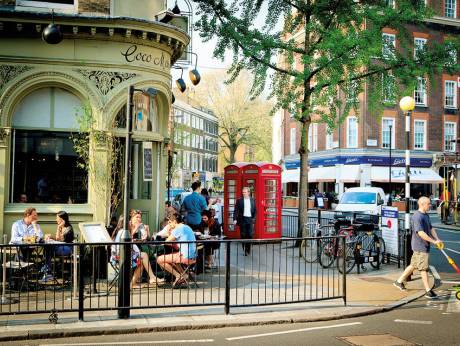Is London still a buyer’s market? The answer that wants to instantly roll off the tongue is “yes, it’s the capital of the UK”. However, with the city currently reporting declining and stagnant house prices in most areas, that answer is becoming more uncertain as the years progress.
“For the wealthiest buyers, London arguably remains a first choice, but there’s been an interesting shift in buying patterns over recent years,” says Johnny Conran, director at SevenCapital in Dubai. “House prices in the most expensive areas are in their millions, versus a UK average of £227,871 (Dh1.09 million) recorded in March this year and there have been ongoing reports that 106,607 people left London last year, heading to regional cities such as Birmingham and Manchester in search of a more affordable place to live and work. The knock-on effect appears to be that we’ve seen some investors lose confidence in the capital and head to the UK’s regional cities, where regeneration, business and demand is beginning to flourish.”
Shift
Conran’s comments are reflected too by Will McKintosh, head of residential at JLL Middle East, Africa and India, who notes a shift in buyer demand. “Since JLL London Residential established a team in 2013, selling UK properties to buyers within the Middle East and North Africa, we have seen a change in demand and buying patterns,” says McKintosh. “Our clients range from nationals and GCC investors to all types of expatriates and we initially found that the demand was primarily for London, with a varied mix between own use and investment for rental yields.
“Mainly due to the changes in taxation, we have now seen buyer demand shift to almost solely owner-occupier within the capital, with investment broadening outside Greater London. With the regeneration of key cities such as Birmingham and Manchester, we have experienced higher demand to buy in these cities, due to lower price entry points and higher rental yields. Simply put, it seems that buyers from the region still have an affinity to own in London to use for their travel to the UK; they believe in London as a mid to long-term safe investment play.”
“Investors recognise that these other cities represent a strong commercial investment with commitment to regeneration and yields, typically 6-7 per cent versus London’s conservative 2-4 per cent gross.”
However, investors recognise that these other cities represent a strong commercial investment with commitment to regeneration and yields, typically 6-7 per cent versus London’s conservative 2-4 per cent gross. McKintosh cites cities such as Slough and Basingstoke that have also faced similar demand being within the commuter belt and benefitting from a commitment to new transport links, such as Crossrail, which has encouraged people working in London to travel and live in the upcoming new developments.
And while the market appears to be waning somewhat when it comes to residential investors choosing London first, there are still some buyers who remain confident.
“We have seen a lot of change in buying patterns in London from buyers from the Mena in recent years. Historically, it was most typical to see buyers opting for the usual popular London postcodes such as Mayfair, Belgravia, Knightsbridge, Kensington and Chelsea and parts of Edgware Road,” says McKintosh. “However, recently we have seen places like Paddington and Marylebone become extremely popular due to their proximity to these popular postcodes, as well as the pricing differential and the charming village type feel of Marylebone High Street. Obviously, Crossrail is another major factor affecting buying patterns with people having such easy access from Heathrow Airport to Paddington and Bond Street when it becomes operational.”
McKintosh says another area that has seen significant change in terms of the retail and food and beverage mix is Covent Garden. “We are starting to see some buyers from the region see this as a new and exciting area with a great vibe in which to live,” he says.
Long term
Conran believes that the UAE will remain a key market for London property in the long term. “There are still buyers in the UAE who continue to buy into London and I don’t think that will ever disappear,” he says.
However, he also notes a shifting pattern that mirrors some of the reasons investors are looking to these regions. “People want more value for money, and that goes for the majority, from the wealthiest investor down to the tenant. This could be a good thing as it’s forcing areas to be regenerated and gentrified.”
And this is the reason the commuter belt represents an opportunity in the affordable London borough. While Slough, Reading and Basingstoke still won’t be part of London, the completion of Crossrail will provide quick access to the capital.
With these towns and larger regional cities pouring money into improving the infrastructure and lifestyle for residents, the savvy investor will recognise that the UK property market is a different beast to what it was a decade ago. London is still a hive of activity, but these other regions represent opportunity.
All rights reserved to the initial publisher for Gulf News
Collected and published by Arms &McGregor International Realty® editorial team. Get in touch with us at [email protected]

